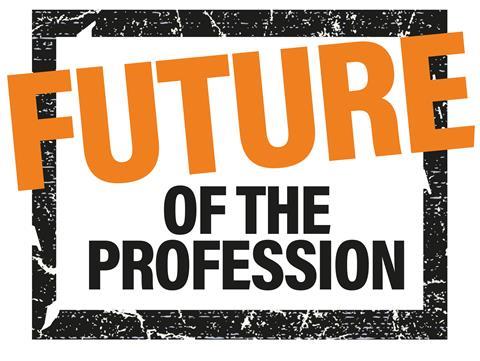Hitting sustainability targets is an exciting challenge, but Eleanor Jolliffe thinks it almost impossible without the full buy-in of client, design and construction teams

I really enjoy my job but I am aware that, though I take public transport, recycle, mostly remember my reusable coffee cup and buy my electricity from renewable sources, the amount of concrete that gets poured into everything I work on makes my personal efforts to “do my bit” in the climate crisis feel a bit pointless. And that is something that nags guiltily at the back of my mind.
One of the projects I am working on currently, a new-build office building, has a zero carbon ambition within the brief. This is not the first time I have worked on a project with sustainability ambitions or goals, but it is the first time I have been on a project with this much buy-in from all sides of the client, design and construction teams.

I am genuinely excited to tackle the challenge as it seems to me that this is what the future will look like for all of us, and it is long overdue.
Never before have I heard curtain walling or plasterboard partitioning spoken of in terms of carbon budgets or “stretch targets”; never before have I seen MEP engineers consider the u-values of internal walls between heated and unheated spaces in their Part L calculations; and never before have I had long and involved conversations about the compressive strength and fire performance of lime bound hemp.
It is intellectually stimulating, technically fascinating and brings the warm glow of feeling like you are doing the right thing – but the world of building products is not making it simple
Arguably this way of thinking should be old hat to all of us by now, but there is no denying that, without the full cooperation and buy-in of the client, design and construction teams, sustainability targets are hard to hit. It is intellectually stimulating, technically fascinating and brings the warm glow of feeling like you are doing the right thing. However, the world of building products is not making it simple.
I have spent an inordinate amount of time over the past few weeks calling product manufacturers to ask for Environmental Product Declarations (EPDs) and have been told everything from “no problem” to “do you know how expensive they are?” to “um, let me ask Jim”. I have recently learnt that EPDs lend themselves to easy duplication. Dimensionally and materially consistent products with consistent supply chains mean that comparing data on say, 1m2of a gypsum plasterboard is comparatively easy, but for internal timber doorsets or joinery it is incredibly hard.
一旦这些文件送达,解读和比较上面的信息就成了一个雷区,更不用说如何制定一个合理的描述性的、符合d&b标准的规范,既能达到环境目标,又不将承包商局限于单一的制造商。
Add to this the screed manufacturer who informed me that, because they don’t sell the sand or cement, they don’t need to do EPDs for the additive they do sell (what on earth can be in it? I dread to think!) and by Friday I was ready to throw the towel in and argue for coal-fired heating systems and panda skin-panelled walls.
许多最可持续或低碳的产品和技术相对较新,特别是在商业应用方面;通常意味着较新的供应商,它们并不总是拥有较成熟供应商拥有的相同测试套件。这是可以理解的;证明完全符合法规要求的测试是复杂和昂贵的,但它确实使它们几乎不可能在大多数应用程序中指定。
The big names do not always sound engaged, comfortable in their near monopolies, and for every conversation about innovative products there is another about the uncertainty surrounding their long-term performance.
然而,在我全身心投入其中的短短几个月里,我已经注意到一种不同;architects and specifiers are asking more of the right questions (no doubt helped, like me, byLETI’s brilliant guides) and are beginning to think outside the box of standard products and details that “we always use”.
Manufacturers are beginning to sound more engaged and less confused when we ask about embodied carbon or end-of-life recycling; some of them are still applying it all in the manner of a pure marketing stunt, but it’s better than nothing.
If you cannot prove your product is fully compliant, while it could solve the climate crisis in its entirety I still could not recommend it to a client
However, if I could ask one thing of product manufacturers and suppliers it would be this: big names, please engage with sustainability better. The time for “green” being tangential to the business model is surely over and we all know you are not yet doing all you could do. Smaller names, I know testing is expensive but if you cannot prove your product is fully compliant, it could solve the climate crisis in its entirety yet I still could not recommend it to a client.
Now, please excuse me. I had better get back to working out if it is better to specify from a British company that manufacturers here with no recycled content and a brochure showing that they use a stream in Lancashire for 50% of their power; or a German one with high transport miles but high recycled content and a small wind turbine free with each purchase.
















No comments yet